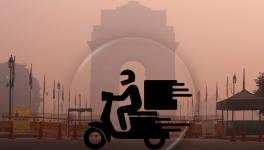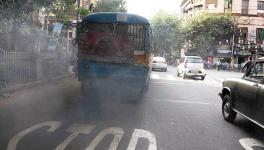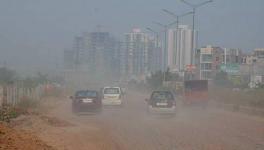Pollution Control Boards Understaffed and Low on Motivation, Says Study
Representational use only
An acute shortage of technical experts and other staff has reduced central and state pollution regulators to mere advisory bodies, leaving them unable to enforce air quality standards, said a recent study by the Delhi-based non-profit Centre for Chronic Disease Control (CCDC).
“State pollution control boards have seen an expansion in their scope and scale of their work over the last two decades but neither their budgets nor manpower match the demands that they are met with,” the study said.
It added that the leadership of these pollution control boards comprises civil servants who often lack the domain expertise necessary to effectively deliver on their mandate and the positions are primarily seen as administrative. “State board officials often have a diminished view of their own role and responsibility. This has shifted their perceived role from that of regulators to technical advisors. Many are also unaware of the full scope of responsibilities accorded to them under existing laws,” it said.
The report pointed out that the lack of convergence and coordination between various departments, at the state and central level, often mean that Pollution Control Board directives, aimed at domains under the control of other departments, are left unimplemented. In some states, the PCBs themselves are viewed as a bureaucratic hurdle whose only job is to clear files, not one tasked with a vital role in protecting human health.
In an effort to establish minimum acceptable levels for ambient air quality, India established its own National Ambient Air Quality Standards (NAAQS) which are in-line with interim targets suggested by the World Health Organization. Since most regions in India fail to meet the much relaxed national air quality standards compared to the more stringent global ones, the aim of this project was to understand the institutional and informational barriers that are hampering the goal of achieving the NAAQS across the country and to provide its recommendations.
In 2012, the Institute of Health Metrics and Evaluation, in collaboration with hundreds of public health scientists around the world, published its Global Burden of Disease report. The report documented the major causes of death and disability in 2010, and their contributory risk factors. It featured scientific advancements in the estimation of the disease burden attributed to air pollution, and showed that over 1.5 million deaths in India were attributable to ambient and household air pollution.
“The core environmental laws of the country state their raison d’etre as protecting human health, but a poor understanding or misinformation dominate the discourse around the epidemiology of air pollution in PCBs. Clarifying these misconceptions is essential if the primary goal of this work is to be realized,” the CCDC study said.
The study also proposed several steps which can be used to address the core structural barriers to achieving the NAAQS, which include all governments rapidly addressing the acute human resource and leadership needs, strengthening of centre-state and interdepartmental interactions, expansion of monitoring capacity to effectively use data for compliance and accountability, mobilisation of significant financial resources to invest in PCBs, engagement of local stakeholders, and strengthening of the local evidence base.
“While recognizing the core structural barriers that are affecting effective
implementation of existing regulations, we propose various recommendations that may assist in addressing these barriers to achieving the NAAQS. These actions are essential if the existing legal and regulatory framework for air pollution is to meet its stated goals of improving air quality and protecting human health,” the study said.
Get the latest reports & analysis with people's perspective on Protests, movements & deep analytical videos, discussions of the current affairs in your Telegram app. Subscribe to NewsClick's Telegram channel & get Real-Time updates on stories, as they get published on our website.
























